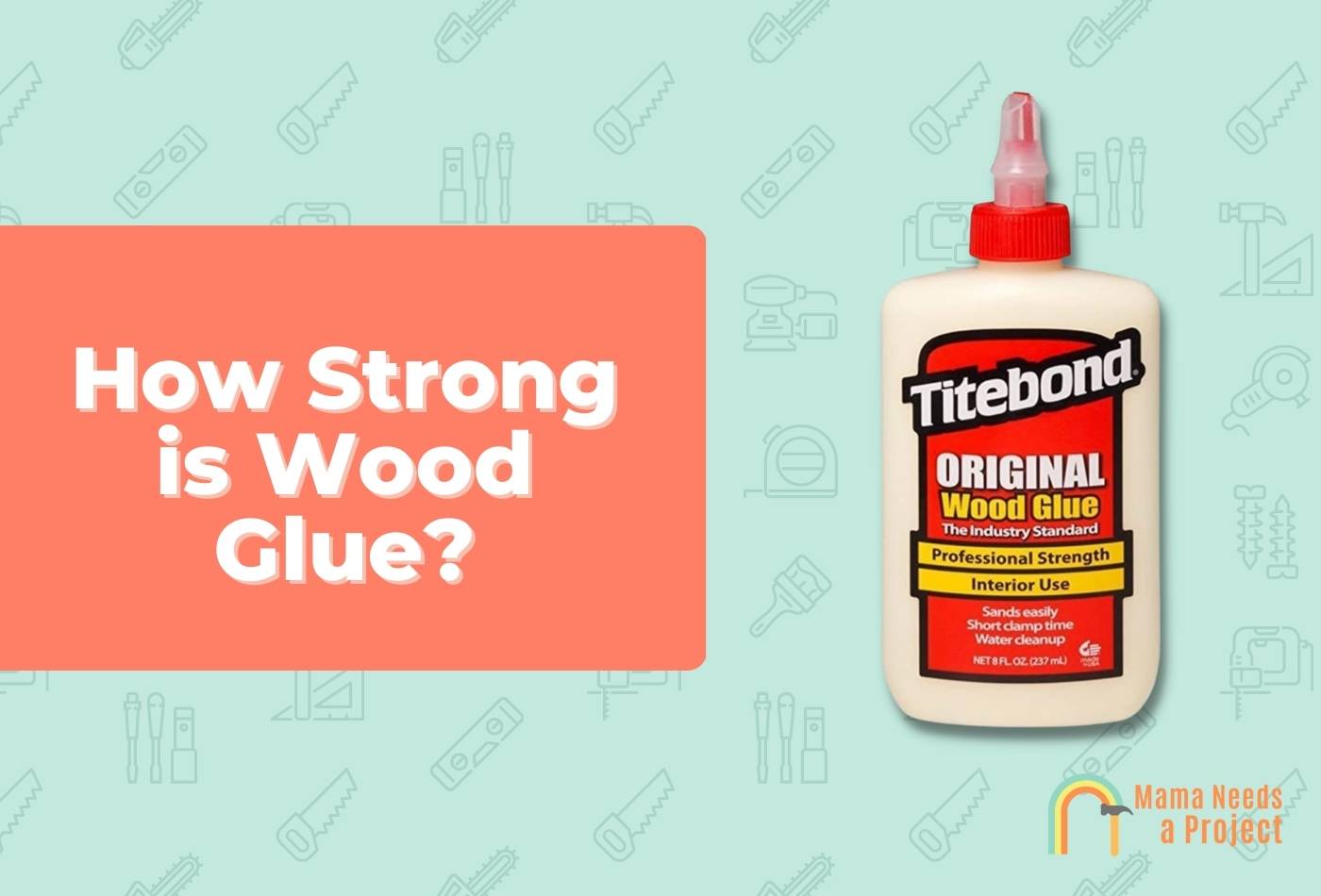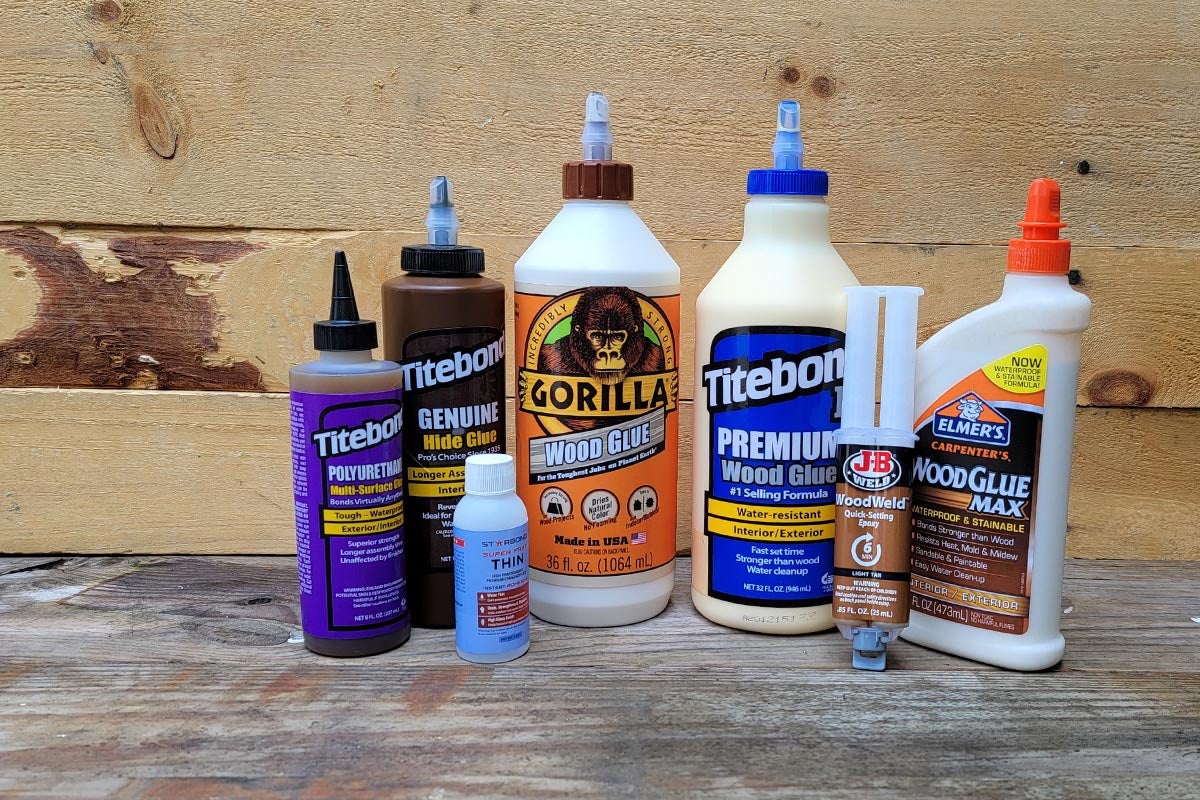If you’ve ever wondered just how strong wood glue is, you’ve come to the right place! Wood glue is a handy adhesive that woodworkers and DIY enthusiasts rely on to bond pieces of wood together. But is it strong enough to withstand the test? Let’s dive into the fascinating world of wood glue and find out!
Wood glue, as the name suggests, is specifically designed for bonding wood surfaces. It’s a type of adhesive that creates a strong and durable bond when applied correctly. But how strong is it exactly? Well, the strength of wood glue can vary depending on factors such as the type of glue used, the quality of the bond, and the conditions in which it is tested.
So, strap on your safety goggles and get ready to explore the fascinating world of wood glue strength. Whether you’re a woodworking enthusiast or simply curious, this article will provide you with all the answers you need about the strength of wood glue. Get ready to stick around and discover the incredible bonding power of this versatile adhesive!

How Strong Are Wood Glue?
Wood glue is a versatile adhesive commonly used in woodworking projects. It provides a strong bond between pieces of wood, allowing for the creation of durable and long-lasting structures. But just how strong is wood glue? In this article, we will explore the strength of wood glue, its benefits, and some tips for using it effectively.
The Strength of Wood Glue
Wood glue is specifically formulated to bond wood surfaces together, creating a strong and permanent bond. The strength of wood glue can vary depending on the type of glue used and the specific application. Generally, wood glue can achieve a bond strength of around 2,000 to 4,000 pounds per square inch (psi).
One reason wood glue is so strong is because it forms a chemical bond with the wood fibers. The glue penetrates into the pores of the wood, creating a tight connection between the adhesive and the surface. This chemical bond provides excellent adhesion and helps to distribute the stress evenly across the joint.
Additionally, the application of pressure during the curing process helps to enhance the strength of wood glue. Clamping the wood pieces together with adequate pressure allows the glue to fully bond with the wood fibers, resulting in a stronger joint. It is important to follow the manufacturer’s instructions for clamping time and pressure to achieve optimal bond strength.
Benefits of Wood Glue
Wood glue offers several benefits that make it a popular choice for woodworking projects. Firstly, it provides a strong bond that is resistant to shear forces, making it ideal for applications where strength and durability are important, such as furniture construction or cabinetry.
Another advantage of wood glue is its ability to fill small gaps and imperfections in the wood surfaces. This helps to create a seamless joint and strengthens the overall structure. Wood glue also dries clear, which is beneficial for projects where aesthetics are important and visible glue lines are undesirable.
Wood glue is also easy to use and clean up. It is typically applied using a brush, roller, or spreader, and any excess glue can be wiped away with a damp cloth. Once dried, wood glue can be sanded, painted, or stained to match the surrounding wood, providing a finished look to the project.
Tips for Using Wood Glue
To achieve the maximum strength with wood glue, there are a few tips to keep in mind. Firstly, always ensure that the wood surfaces are clean and free from any dust or debris before applying the glue. This will help to ensure a strong bond by allowing the glue to make direct contact with the wood fibers.
It is also important to apply the glue evenly and in the correct amount. Too little glue may result in a weak bond, while too much glue can lead to excessive squeeze-out, which can be difficult to clean up. Following the manufacturer’s instructions for application and coverage is essential for optimal results.
When joining wood pieces, make sure to apply even pressure during the clamping process. This will help to ensure a tight bond and prevent any gaps between the surfaces. Using clamps or other pressure-applying tools will help to achieve the necessary pressure for a strong bond.
In conclusion, wood glue is a strong and reliable adhesive for woodworking projects. It provides a durable bond between wood surfaces, with a strength ranging from 2,000 to 4,000 psi. By following the tips mentioned and utilizing wood glue properly, you can create sturdy and long-lasting woodwork pieces. So, go ahead and get creative with your woodworking projects, knowing that wood glue has got you covered!
Key Takeaways: How Strong Are Wood Glues?
- Wood glue is a very strong adhesive that is specifically designed for bonding wood pieces together.
- The strength of wood glue depends on various factors, such as the type of glue used and the proper application.
- High-quality wood glues can have a bond strength of up to 4,000 pounds per square inch (psi).
- Wood glue provides a strong and durable bond that can withstand both lateral and vertical forces.
- It is important to follow the recommended drying and curing times for wood glue to achieve optimal strength.
Frequently Asked Questions
Wood glue is a common adhesive used in carpentry and woodworking projects. If you have questions about the strength and capabilities of wood glue, we have answers. Check out these frequently asked questions about wood glue:
1. How can I maximize the strength of wood glue?
The strength of wood glue can be optimized by following a few key steps. First, ensure that the surfaces being glued are clean and free from dust or debris. Use sandpaper to create a rough surface, which allows the glue to penetrate better. Additionally, applying clamping pressure during the drying process enhances the bond strength. Lastly, make sure to use the appropriate type of wood glue for the specific project you’re working on.
Remember, it’s always a good idea to read the instructions on the wood glue packaging to maximize its strength. Following the manufacturer’s guidelines will help you achieve the best results.
2. Can wood glue hold heavy objects together?
Wood glue has impressive bonding strength and can hold heavy objects together. However, it’s important to consider the weight distribution and stresses placed on the glue joint. It is recommended to use mechanical fasteners such as screws or nails in conjunction with wood glue when dealing with heavy loads. The combination of mechanical fasteners and glue creates a more secure and durable bond, ensuring the strength and longevity of the project.
For exceptionally heavy loads, epoxy adhesives might be a better option. Always consider the weight and specific requirements of your project when choosing the right adhesive.
3. How long does it take for wood glue to dry?
The drying time of wood glue can vary depending on factors such as humidity, temperature, and the type of glue used. Generally, wood glue dries completely within 24 hours. However, it’s important to note that the glue will start to set and create a bond within minutes of application. It’s recommended to provide ample time for the glue to cure before putting stress on the joint.
Keep in mind that different types of wood glue may have different drying times. It’s always a good idea to refer to the manufacturer’s instructions for specific drying guidelines.
4. Can wood glue be used on different types of wood?
Wood glue is designed to work on various types of wood, including hardwoods and softwoods. It creates a strong bond when applied correctly to clean, properly prepared wood surfaces. However, there are specific wood glues available in the market that are formulated for certain wood species or purposes.
If you’re working with exotic woods, oily woods, or porous woods, it’s essential to choose a wood glue specifically designed for those materials. These specialized wood glues ensure better adhesion and bond strength for different wood types.
5. Is wood glue waterproof?
Traditional wood glue is not inherently waterproof. It is water-resistant to some extent, but prolonged exposure to water can weaken and break down the bond.
If you require a waterproof bond, there are specific wood glues available that are labeled as waterproof or water-resistant. These specialized wood glues are formulated to withstand moisture and provide a durable bond, making them ideal for outdoor projects or areas prone to water contact.

How strong is wood glue
Summary
Wood glue is a super strong adhesive that can hold pieces of wood together really well. It works by creating a strong bond between the fibers of the wood and drying up to create a really tough and durable connection.
When choosing wood glue, it’s important to look for ones labeled as “strong” or “ultimate strength” for the best results. It’s also important to follow the instructions carefully and allow enough time for the glue to dry properly. Remember, wood glue is not suitable for all materials, so make sure to use the right adhesive for the job.
